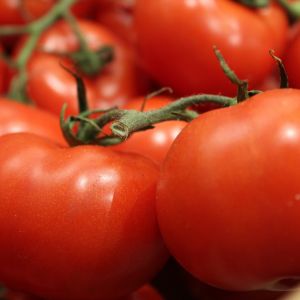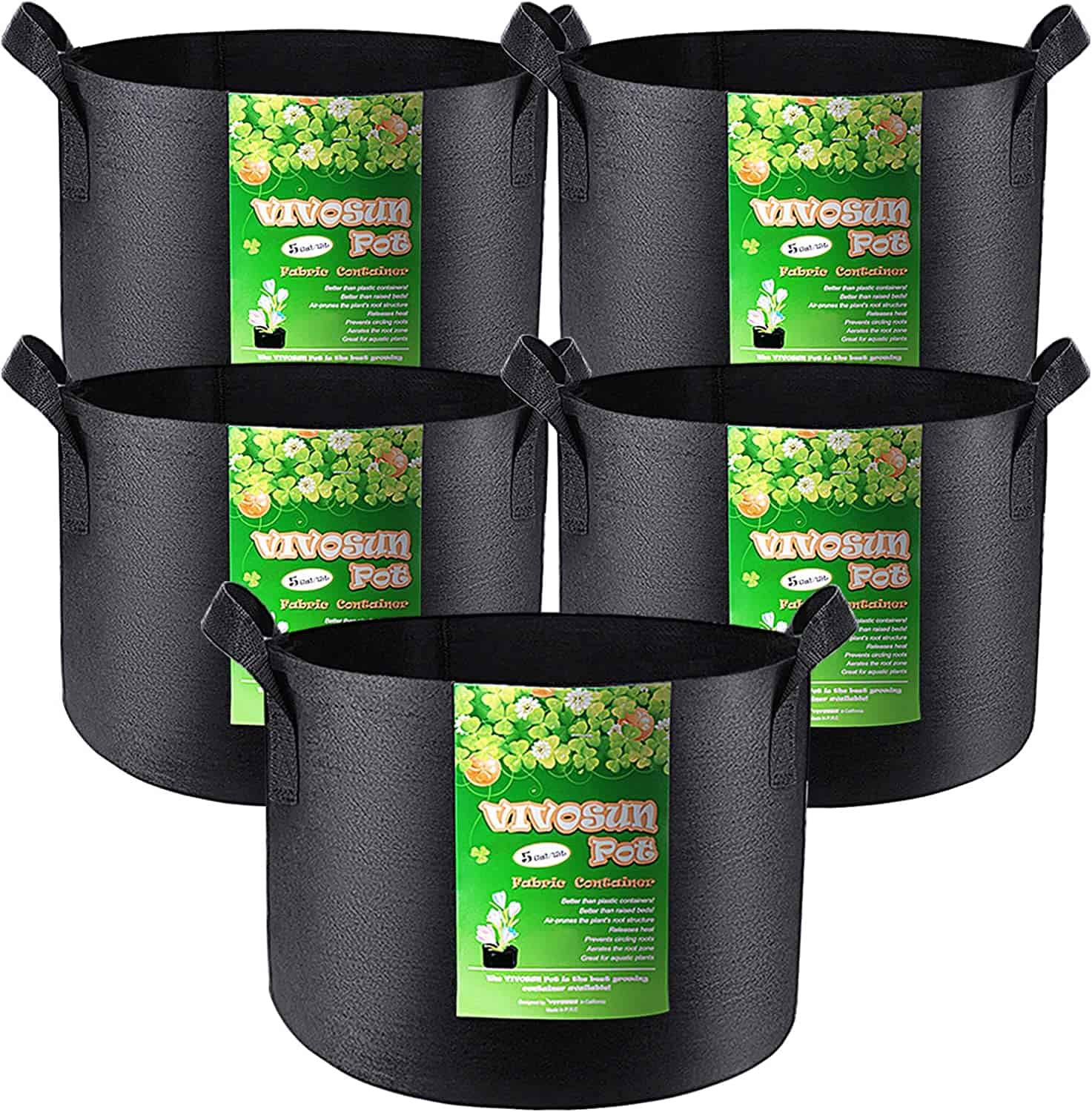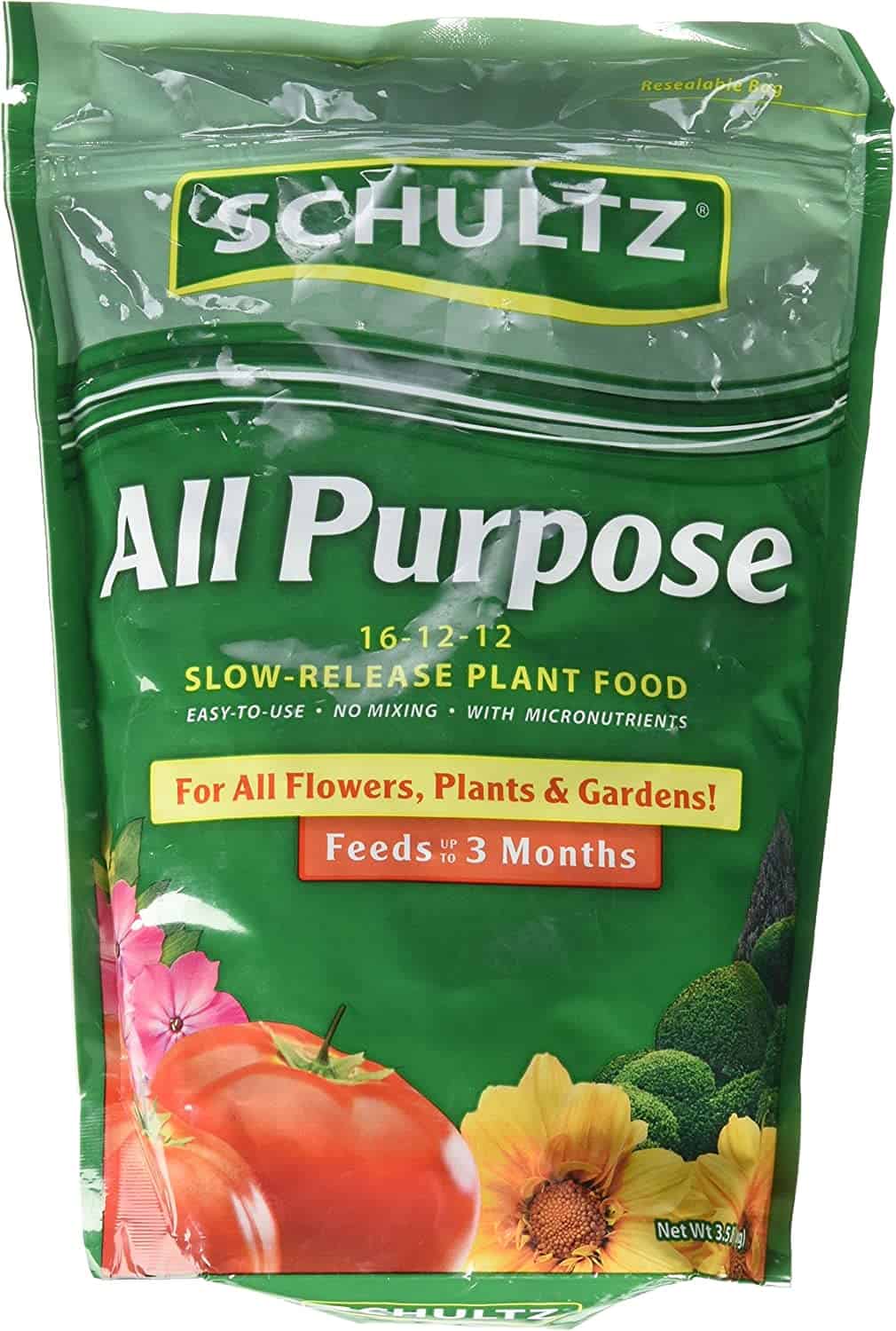Are you short on space and want to grow big tomatoes in pots? Growing tomatoes in pots is a great option for those with limited outdoor space. Not only do they take up less space, but they are also easier to care for and can produce just as much fruit as traditional garden beds.
This post may contain affiliate links.
Choosing the Right Container
When it comes to growing big tomatoes in pots, choosing the right container is crucial. Here are some things to keep in mind when selecting a container for your tomato plant.
Related Article: Why Are the Bottoms of My Tomatoes Black? Causes and Solutions
Size of the Container
Tomatoes require a lot of space to grow, so it’s important to choose a container that is big enough. A good rule of thumb is to use a pot or container that is at least 5 gallons in size. This will give your tomato plant enough room to grow and spread out its roots. If you’re growing a larger variety of tomato, you may need to use an even bigger container.
5-Pack 5 Gallon Grow Bags Heavy Duty 300G Thickened Nonwoven Plant Fabric Pots with Handles
Drainage Holes
Proper drainage is essential for the health of your tomato plant. Make sure the container you choose has drainage holes in the bottom to allow excess water to drain out. If the container doesn’t have drainage holes, you can drill some yourself. Just be sure to place a layer of gravel or small rocks at the bottom of the container to prevent the drainage holes from getting clogged.
Related Article: Best Natural Fertilizer for Tomatoes
Material of the Container
There are many different materials to choose from when it comes to containers for your tomato plant. Here are some of the most common:
- Plastic: Lightweight and affordable, plastic pots are a popular choice for growing tomatoes. They come in a variety of sizes and colors, and are easy to move around.
- Clay: Clay pots are porous and allow air and water to pass through, which can be beneficial for your tomato plant. However, they can be heavy and breakable.
- Metal: Metal pots are durable and can add a decorative touch to your garden. However, they can get hot in the sun and may require a liner to prevent the soil from drying out too quickly.
- Stone: Stone pots are heavy and expensive, but they can add a beautiful, natural look to your garden. They are also very durable and can last for many years.
By choosing the right container for your tomato plant, you can help ensure that it grows big and healthy. Keep in mind the size of the container, the presence of drainage holes, and the material of the container when making your selection.
Preparing the Potting Mix
Growing tomatoes in pots requires a well-draining, nutrient-rich potting mix that will provide the necessary support for the tomato plants to thrive. Here are some tips for preparing the perfect potting mix for growing big tomatoes in pots.
Related Article: How to Freeze Whole Tomatoes
Soil Mix
The soil mix is the foundation of your potting mix. A good potting soil for growing tomatoes in pots should be well-draining, yet retain enough moisture to keep the plants hydrated. A basic potting mix can be made by combining equal parts of potting soil, compost, and perlite.
Fertilizer
Tomatoes are heavy feeders and require regular fertilization to produce healthy fruits. A slow-release fertilizer can be added to the potting mix before planting to provide a steady supply of nutrients throughout the growing season. Alternatively, a balanced fertilizer can be applied every two weeks during the growing season to keep the plants healthy and productive.
Schultz 018061 Spf48640 All Purpose Slow-Release Plant Food, 3.5 Lbs, 56 Ounce
Additives
Additives such as peat moss, vermiculite, and coconut coir can be added to the potting mix to improve its texture and water-holding capacity. Peat moss can help retain moisture in the soil, while vermiculite can improve drainage. Coconut coir is a sustainable alternative to peat moss and can help improve soil structure.
When preparing your potting mix, it is important to ensure that all the ingredients are well-mixed and evenly distributed. You can use a garden fork or a trowel to mix the ingredients thoroughly.
Related Article: How to Prune Tomatoes for a Bountiful Harvest
In summary, a well-draining, nutrient-rich potting mix is essential for growing big tomatoes in pots. By combining equal parts of potting soil, compost, and perlite, and adding slow-release or balanced fertilizer and additives such as peat moss, vermiculite, or coconut coir, you can create the perfect potting mix for your tomato plants.
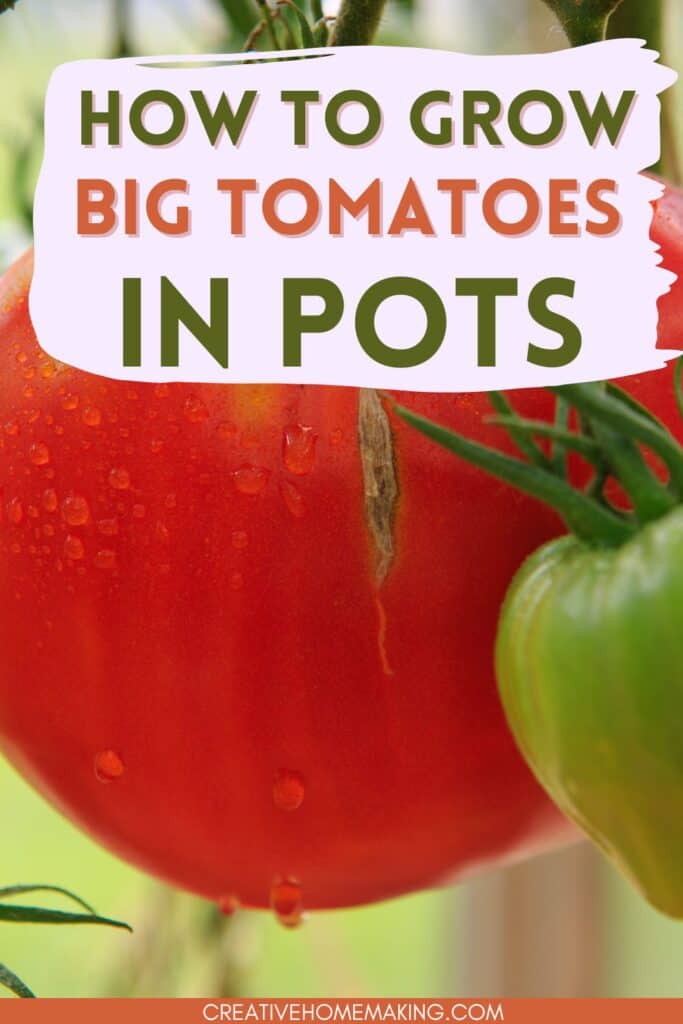
Selecting the Tomato Variety
When it comes to growing big tomatoes in pots, selecting the right tomato variety is crucial. Here are a few things to consider when choosing your tomato variety:
Related Article: Pickled Cherry Tomatoes
Determinate vs Indeterminate
Determinate tomatoes grow to a certain height and then stop, making them a great choice for small spaces and containers. Indeterminate tomatoes, on the other hand, continue to grow and produce fruit until the first frost. While they require more space and support, they can yield a larger harvest.
Bush vs Vining
Bush tomatoes, also known as determinate tomatoes, are compact and bushy, making them ideal for small containers. Vining tomatoes, also known as indeterminate tomatoes, require more space and support, but can produce a larger harvest.
Related Article: Can Tomatoes Survive Frost?
Flavor and Size
Tomatoes come in a variety of flavors and sizes, so it’s important to choose a variety that suits your taste preferences and container size. Here are a few popular tomato varieties for growing in pots:
| Tomato Variety | Size | Flavor |
|---|---|---|
| Sprite | Small | Sweet |
| Early Girl | Medium | Tangy |
| Brandywine | Large | Sweet |
| Cherokee Purple | Large | Rich and Sweet |
It’s important to keep in mind that larger tomato varieties will require a larger container to accommodate their roots and leaves. Additionally, some tomato varieties are better suited for warmer climates, while others can tolerate cooler temperatures.
Related Article: Best Soil for Strawberries in Pots
Planting the Tomato Seedlings
Growing big, juicy tomatoes in pots requires planting the seedlings correctly. Here are some tips to help you get started:
Transplanting Seedlings
When transplanting tomato seedlings, it’s important to remove the bottom few sets of leaves and dig a hole deep enough (3 to 5 inches) so that most of the plant is buried in the planting hole. By doing this, the tomato plant will produce roots along the buried part of its stem, developing a strong root system and sturdier plants.
Related Article: 13 Tomato Recipes for Canning
Once you have the hole ready, water the seedling well, loosen the soil, and lift it out of the starter pot. Get the soil good and moist, then dig around the plant with a table knife to loosen the soil around the roots. Use the knife to lever out the plant, trying not to break any roots.
Staking or Caging the Plants
Tomato plants need support to grow tall and strong, especially when growing in pots. You can either stake or cage the plants to provide support. Staking involves using a wooden or metal pole to support the plant, while caging involves using a wire or plastic cage to support the plant.
When staking, drive the stake into the soil about 6 inches away from the plant, being careful not to damage the roots. Tie the plant to the stake with a soft twine or tomato tie, making sure not to tie it too tightly.
When caging, place the cage over the plant when it’s still small enough to pass through the cage. As the plant grows, gently guide the branches through the openings in the cage.
Related Article: How to Roast Cherry Tomatoes in the Oven
Watering Schedule
Tomato plants need regular watering to thrive. Water the plant deeply once a week, making sure the water reaches the roots. If the soil feels dry to the touch, it’s time to water again.
However, be careful not to overwater the plant, as this can lead to root rot. To prevent this, make sure the pot has good drainage and don’t let it sit in standing water.
In summary, planting tomato seedlings in pots requires burying most of the plant in the soil, providing support through staking or caging, and watering regularly but not too much. By following these tips, you’ll be on your way to growing big, juicy tomatoes in your own backyard!
Related Article: The Best Compost for Tomatoes
Caring for the Tomato Plants
Growing tomatoes in pots requires proper care and attention to ensure that they grow healthy and produce delicious fruits. Here are some essential tips on how to care for your tomato plants:
Sunlight and Temperature
Tomatoes need plenty of sunlight to grow and thrive. Place your pots in a location that receives sunlight all day long, and if conditions change throughout the growing season, move the pots to ensure adequate sun exposure. Tomato plants like warm temperatures, so make sure to keep them in a spot that is consistently warm and protected from cold drafts.
Related Article: Growing Clematis in Pots
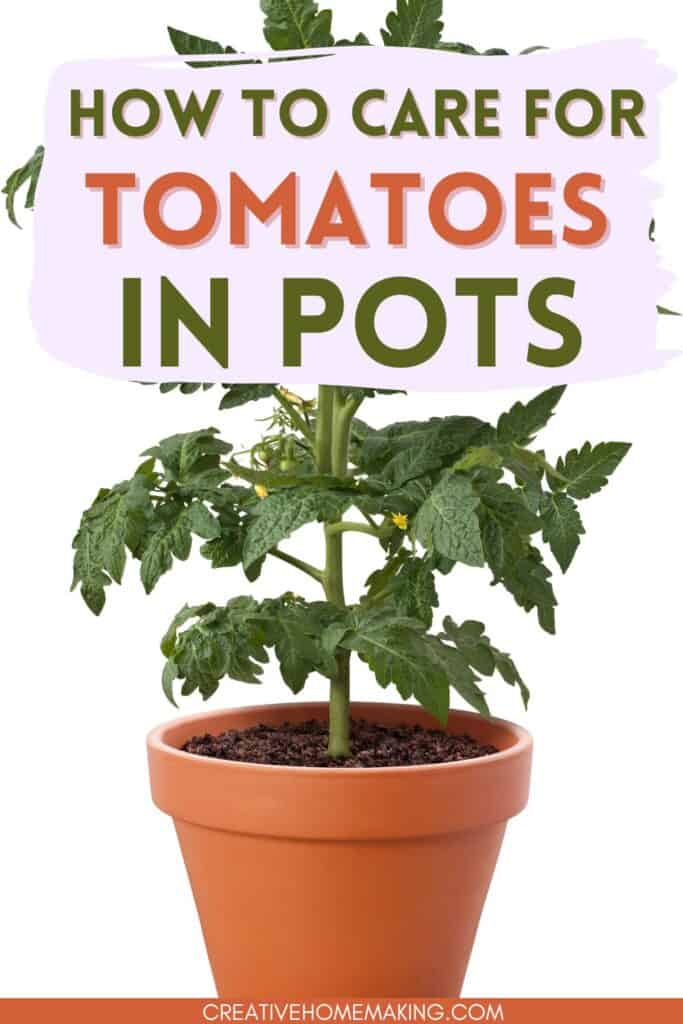
Watering and Nutrients
Tomato plants need consistent watering to keep the soil moist but not waterlogged. Water your plants deeply once a week, but adjust your watering frequency according to the weather conditions. During hot and dry spells, you may need to water your plants more often. Additionally, tomato plants need nutrients to grow and produce fruits. Use a balanced fertilizer once a month to provide your plants with the necessary nutrients.
Pruning and Training
Pruning and training your tomato plants help them grow strong and healthy. Remove the suckers that grow between the main stem and the branches to encourage the plant to focus its energy on producing fruits. Additionally, stake or cage your plants to keep them upright and prevent them from falling over.
Pest and Disease Control
Tomato plants are susceptible to pests and diseases, so it’s essential to keep an eye out for any signs of trouble. Use organic pest control methods, such as neem oil or insecticidal soap, to keep pests at bay. Additionally, prevent diseases by providing your plants with good air circulation and avoiding overcrowding.
By following these care tips, you can ensure that your tomato plants grow healthy and produce plenty of delicious fruits.
Harvesting and Enjoying Homegrown Tomatoes
Fruiting and Ripening
Tomatoes are ready to harvest when they are fully ripe and have a deep, rich color. They should also be firm to the touch but not too hard. You can tell if a tomato is ripe by gently squeezing it. If it gives slightly, it’s ready to be picked.
To encourage your tomatoes to ripen faster, you can try removing some of the leaves around the fruit. This will allow more sunlight to reach the tomatoes and speed up the ripening process. You can also try using a ripening agent, such as ethylene gas, to help your tomatoes ripen faster.
Harvesting and Storing
When it’s time to harvest your tomatoes, it’s important to be gentle. Use a sharp pair of scissors or pruning shears to cut the stem just above the fruit. Be careful not to damage the fruit or the plant.
Once you’ve harvested your tomatoes, you can store them in a cool, dry place. If you’re not planning to use them right away, you can store them in the refrigerator. However, keep in mind that refrigeration can affect the flavor and texture of your tomatoes.
Growing big tomatoes in limited space is possible with a little creativity and some careful planning. Whether you have a small patio, balcony, or even a window sill, you can still enjoy a bountiful harvest of juicy tomatoes. Just remember to choose the right variety, provide enough light and nutrients, and water regularly. Happy gardening!
Follow my gardening board on Pinterest.
